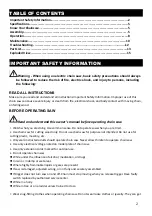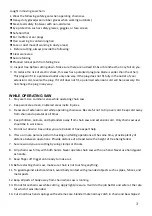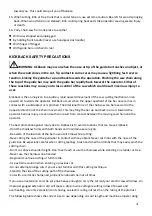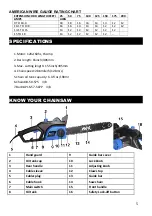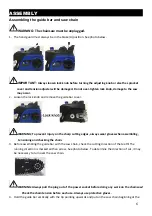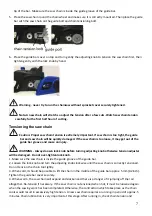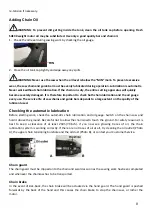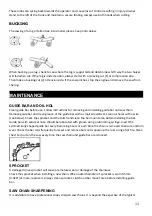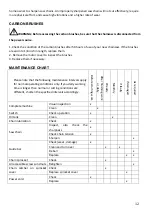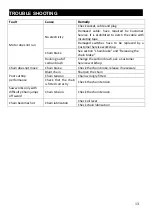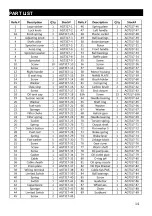
11
These limbs can spring back towards the operator and cause loss of control resulting in injury. Always
stand to the left of the trunk and maintain a secure footing. Always use both hands when cutting.
BUCKING
The sawing of a log or fallen tree into smaller pieces. See photo below.
When bucking up a log, check to see where the log is supported and determine which way the two halves
will fall when cut. If the log is under tension, always start with a relieving cut (1) at compression side.
Then make a bucking cut (2) at tension side. If the saw pinches, stop the engine and remove the saw from
the log.
MAINTENANCE
GUIDE BAR AND OIL HOL
Clean guide bar before use. Follow instructions for removing and installing guide bar and saw chain.
Remove guide bar and clean groove of the guide bar with a small screwdriver. Clean oil holes with a wire
(see below). Check the sprocket and the clutch and clean the bar mount area before installing the bar.
Guide bar with sprocket nose should be lubricated with grease using a lubricating syringe. Invert the
symmetrically shaped guide bar every 8 working hours or each time the chain is removed to ensure uniform
wear. Check the bar rails frequently for wear and remove burs and square up the rails using a flat file. Clean
the Oiler port on the saw every time the saw chain and guide bar are removed.
SPROCKET
A damaged drive sprocket will cause premature wear or damage of the chainsaw.
Check the sprocket when installing a new chain. When outer diameter of sprocket is worn 0.5mm
(0.020")
or more, replace it. Always clean sprocket, clutch and bar mount area before installing guide
bar.
SAW CHAIN SHARPENING
It is advisable to have professional shops sharpen saw chains. It is beyond the expertise of the typical
Summary of Contents for AGT317
Page 14: ...14 PART LIST...
Page 15: ...15 EXPLODED VIEW...


